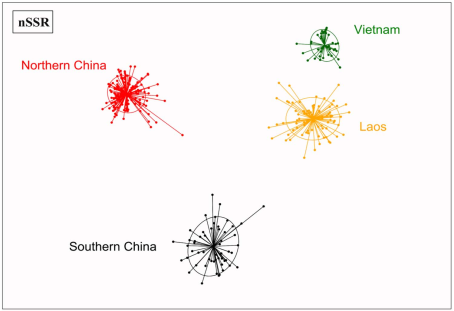THE LAST PRIMARY FORESTS OF THE TERTIARY RELICT Glyptostrobus pensilis CONTAIN THE HIGHEST GENETIC DIVERSITY
19.12.2019 -
THE LAST PRIMARY FORESTS OF THE TERTIARY RELICT Glyptostrobus pensilis CONTAIN THE HIGHEST GENETIC DIVERSITY
Xingtong Wu, Markus Ruhsam, Yafeng Wen, Philip I. Thomas, James R. P. Worth, Xueying Lin, Minqiu Wang, Xinyu Li, Lu Chen, Vichith Lamxay, Nam Le Canh and Gretchen Coffman
ABSTRACT
Glyptostrobus pensilis (Staunt.) Koch is a relict species in the Cupressaceae that previously had a global distribution but is now restricted to Southern China and two disjunct populations along the Annamite ranges in Laos and Vietnam. Using nuclear and chloroplast microsatellite markers (cpSSR and nSSR, respectively), we investigated the genetic diversity and divergence within and between 14 populations representing the entire range. Nuclear EST-SSR markers revealed low genetic diversity (He = 0.272) within populations and strong genetic differentiation (FST = 0.452) among populations. Populations in Laos, which represent the last primary forests of G. pensilis, contain the highest genetic diversity and are of particular conservation importance. The geographic cpSSR variation is consistent with the results from the nSSR analysis. Prolonged geographical isolation is likely to be the main reason for regional genetic patterns. Climatic changes during the Holocene, coupled with anthropogenic impacts, have further reduced its distribution and population size. The clear genetic structure suggests that at least, two refugia existed at different latitudes in Southeast Asia. Preserving and expanding its remaining habitat and increasing population sizes are likely to be the most important measures for the conservation of this species
Forestry 2019; 00, 1–17, doi:10.1093/forestry/cpz063

-
DANH SÁCH CÁC BÀI BÁO, BÁO CÁO KHOA HỌC ĐÃ CÔNG BỐ NĂM 2019
02.01.2020 -
IN VITRO MICROPROPAGATION OF THE ORCHID (Dendrobium crystallinum var. alba)
19.12.2019 -
NHÂN GIỐNG CÂY DƯỢC LIỆU THIÊN MÔN RÁNG NHẰM BẢO TỒN VÀ PHÁT TRIỂN NGUỒN GEN CÂY RỪNG TẠI LÂM ĐỒNG
19.12.2019 -
THE LAST PRIMARY FORESTS OF THE TERTIARY RELICT Glyptostrobus pensilis CONTAIN THE HIGHEST GENETIC DIVERSITY
19.12.2019 -
ĐẶC ĐIỂM SINH THÁI, NHÂN GIỐNG HOM VÀ SINH TRƯỞNG CÂY ƯƠM AN XOA (Helicteres hirsuta Lour.) TẠI TỈNH LÂM ĐỒNG
05.12.2019 -
Aglaonema costatum f. concolor Nicolson (Araceae): A NEW RECORD FOR THE FLORA OF VIETNAM
05.12.2019 -
KIẾN THỨC BẢN ĐỊA CỦA NGƯỜI CHU RU TRONG SỬ DỤNG CÂY THUỐC Ở LÂM ĐỒNG
05.12.2019 -
TỔNG QUAN VỀ CÂY TRÔM VÀ TIỀM NĂNG PHÁT TRIỂN LOÀI NÀY Ở MỘT SỐ VÙNG KHÔ HẠN TẠI VIỆT NAM
05.12.2019
